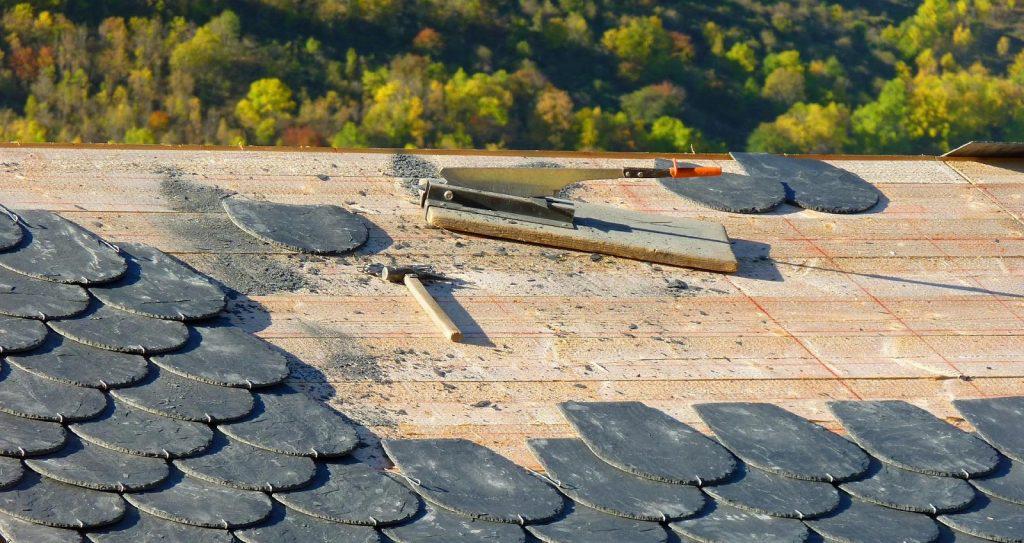
Choosing the right material for your roof isn’t always easy. No wonder then that some homeowners decide to ask the contractor for advice if they constructing a new house. Others enquire with their friends and neighbors, while the rest of people simply go with a material they like.
While aesthetics do play a part in the final decision, the two main factors you should really be paying attention to are the required level of maintenance and the longevity of the roof. Essentially, you want to install a roof that will require the least amount of inspections and repairs over the longest period, preferably several decades. So, have you ever wondered which materials fit the bill?
Copper roofs
We’ll start straight away with the best roofing material out there: copper. Companies like First Class Slate are responsible for installing the most durable roofing material of them all. Since it is a metal, copper can withstand the harshest of climates, from bitter colds to the scorching sun. Not only that nut it develops a patina over time that actually strengthens its structures. Basically, instead of decaying over time, copper becomes stronger the older it is.
In terms of the initial price you pay, this means that you will have to spend a few extra dollars on a copper roof. However, when compared to other types of roofs we are about to list, copper is by far the most long-lasting material out there. While a typical wooden or asphalt shingles roof lasts two and a half decades on average, a copper roof can last for centuries! No wonder then that you can see it on heritage buildings like churches and town halls.
Traditional roofing options: slate and clay roofs
When it comes to the most common type of residential roofing, then we are speaking of slate or clay roofs. Despite their popularity and rich history, these materials offer a poor price vs. quality ratio. They cost a pretty penny but they are far less weatherproof than copper roofs. You have to keep in mind that a slate roof is nothing more than heat-treated earth, so don’t expect it to hold off hail and the neighbor’s football for far too long.
Furthermore, they have a terrible record when it comes to maintenance. For instance, a falling branch can damage several individual tiles that are meters apart but you will have to replace the entire section of the roof instead of just the damaged tiles. Furthermore, clay tiles are rather heavy so they put additional stress to the roof’s understructure, making it prone to giving way during severe weather conditions like hurricanes and tornados.
A roofing solution for the country: thatched roofs
Now, if you live in the country, there is bound to be at least one house with a thatched roof in your village. You have probably been admiring it for years because of its rustic appearance. You also might have thought of getting the same type of roofing for your cottage because it’s relatively cheap.
We are sorry to say but you are wrong to think that that a thatched roof is long-lasting and a cheap material to install. Believe it or not, but a standard-size thatched roof can cost up to 10,000 dollars which is a hefty sum of money. Apart from the rustic charm, you are also getting a fire hazard. All it takes is one spark and the entire roof will go up in flames. After all, the material thatched roofs are made of is wood, which turns into a giant safety match during the dry season.
Concrete tiles
One type of roofing that will definitely never go ablaze is the concrete roof. We are not referring to flat roofs used on commercial structures but rather about concrete tiles used for covering residential structures like your home. At first glance, a concrete roof seems like a good idea because the material is cheap and seemingly easy to maintain.
However, there are many hidden maintenance issues when it comes to concrete tiles. Firstly, they typically come with rebaring so they are really quite fragile, nearly as much as clay tiles. Secondly, one of their biggest advantages can turn into a flaw after just several years on top of your house. Namely, all the different colors concrete tile are available in are no nearly as durable as you think. No color, regardless of how good it is, is a match for the scorching Australian sun. We assure you that after a mere half a decade, your concrete roof will turn back to the color of cement, grey.
A look into the future: Plastic and composite tiles
The final type of roofing material we discuss here is used the least. This is because we don’t know for sure how the future of composite materials tiles will develop. So far, plastic tiles have not fared well because after a while, the sun gets to them. Not only do they fade away like concrete tiles but they lose their structural integrity and become fragile to the breaking point.
It does not come as a surprise that the strongest roof tiles are the ones made from metal. Copper still holds the title of the king of roofing materials because it outperforms its competitors in the two of the most important segments; it is durable and virtually maintenance-free.